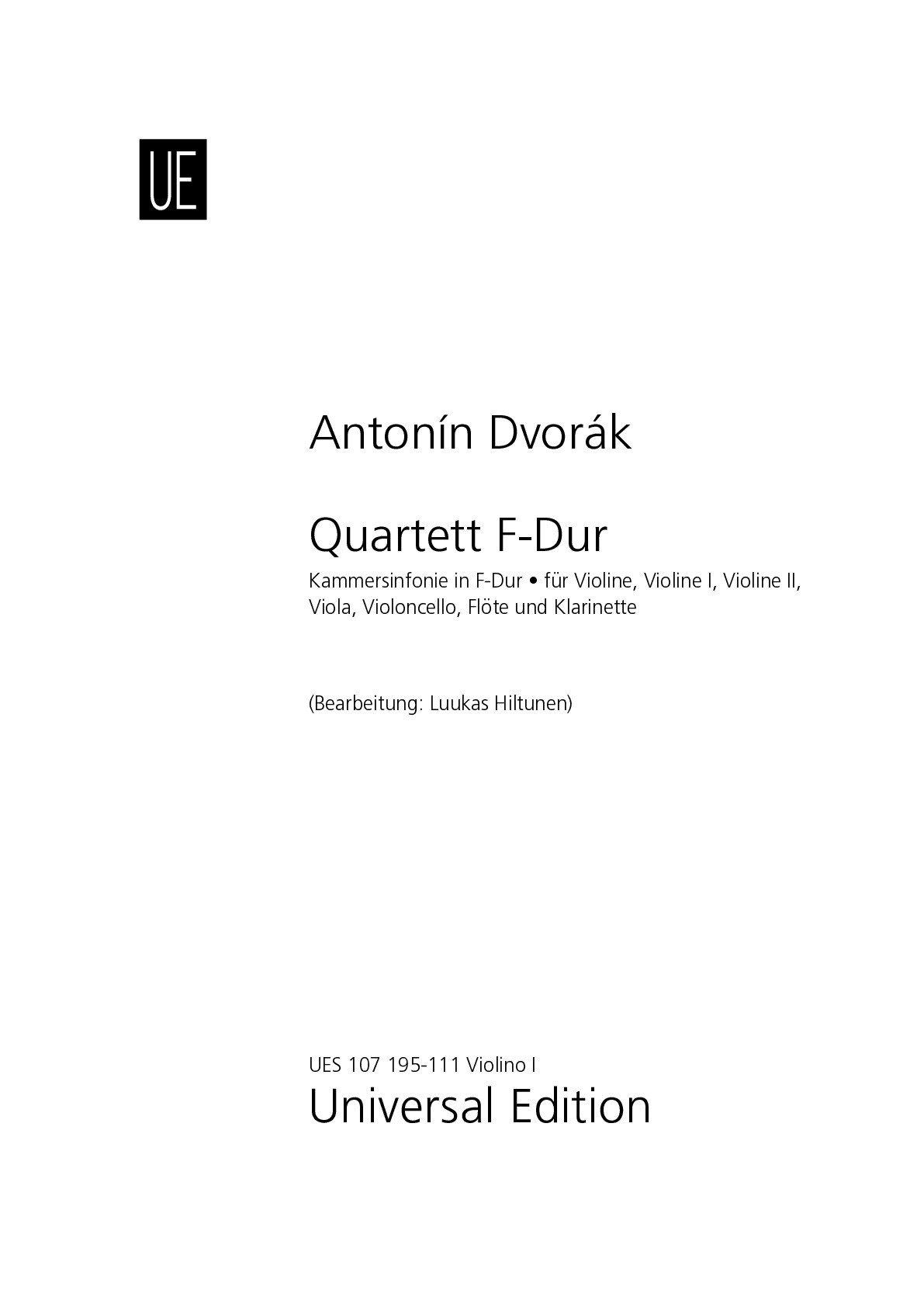.png)
Digital edition
immediately available as PDF
€14.95
Payments:
Shipping:
Antonín Dvorák
Violine I (Quartett F-Dur)
Bearbeitet von: Luukas Hiltunen
UES107195-111
Type: Stimme
Format: 210 x 297 mm
Pages: 20
Digital edition
immediately available as PDF
€14.95
Payments:
Shipping:
Audio preview
Description
Antonín Dvorák (1841–1904) composed his Quartett F-Dur, nicknamed the American Quartet (Op. 96), in 1893, during the composer's time in United States. The Quartet is among the most beloved compositions in the chamber music repertoire and was composed shortly after the New World Symphony, before that work had been performed. Dvorák sketched the Quartet in three days and completed it in thirteen more days, finishing the score with the comment "Thanks God. I am satisfied. It went quickly".
The present adaption of the Quartet as a Chamber Symphony in F major by Mr. Hiltunen, scored for flute, clarinet, three violins, viola and violoncello, was commissioned by Kuopio Symphony Orchestra. The setting was initially commissioned as incidental music for a children's play as a summer holiday treat for the musicians who were available, hence the unusual instrumentation. It only took just over a month for composer Hiltunen to produce the arrangement, a process that was, according to the composer, "astonishingly effortless". Moreover, quoting the words of Mr. Hiltunen, "[when] performed with an enriched and thus more extensive timbre, the Quartet becomes sonically closer to the New World Symphony, fascinatingly accentuating the similarities between these closely composed works". To distinguish his arrangement from the original, composer Hiltunen titled the movements of the work as follows, in the style of Rudolf Barshai's Shostakovich orchestrations derived from the composer's string quartets or Felix Mendelssohn's own setting for winds and timpani of his String Symphony No. 8 in D major: Prelude – Nocturne – Scherzo with Trio – Finale. The end result is an entity that is a far more convincing listening and performing experience than the original, leaving one to wonder why Dvorák did not produce a version of the work for an extended instrumentation.
More information
Type: Stimme
Format: 210 x 297 mm
Pages: 20

